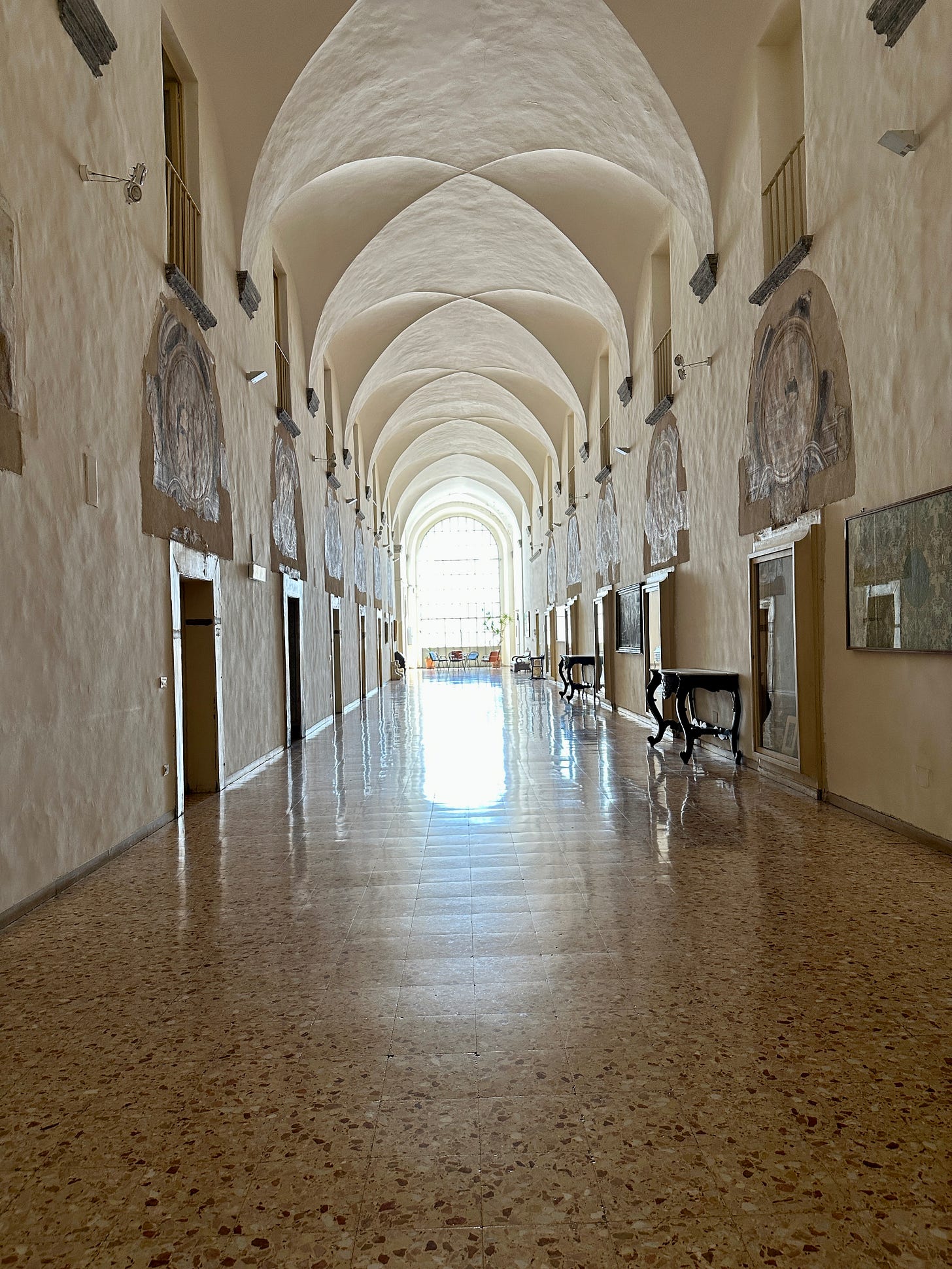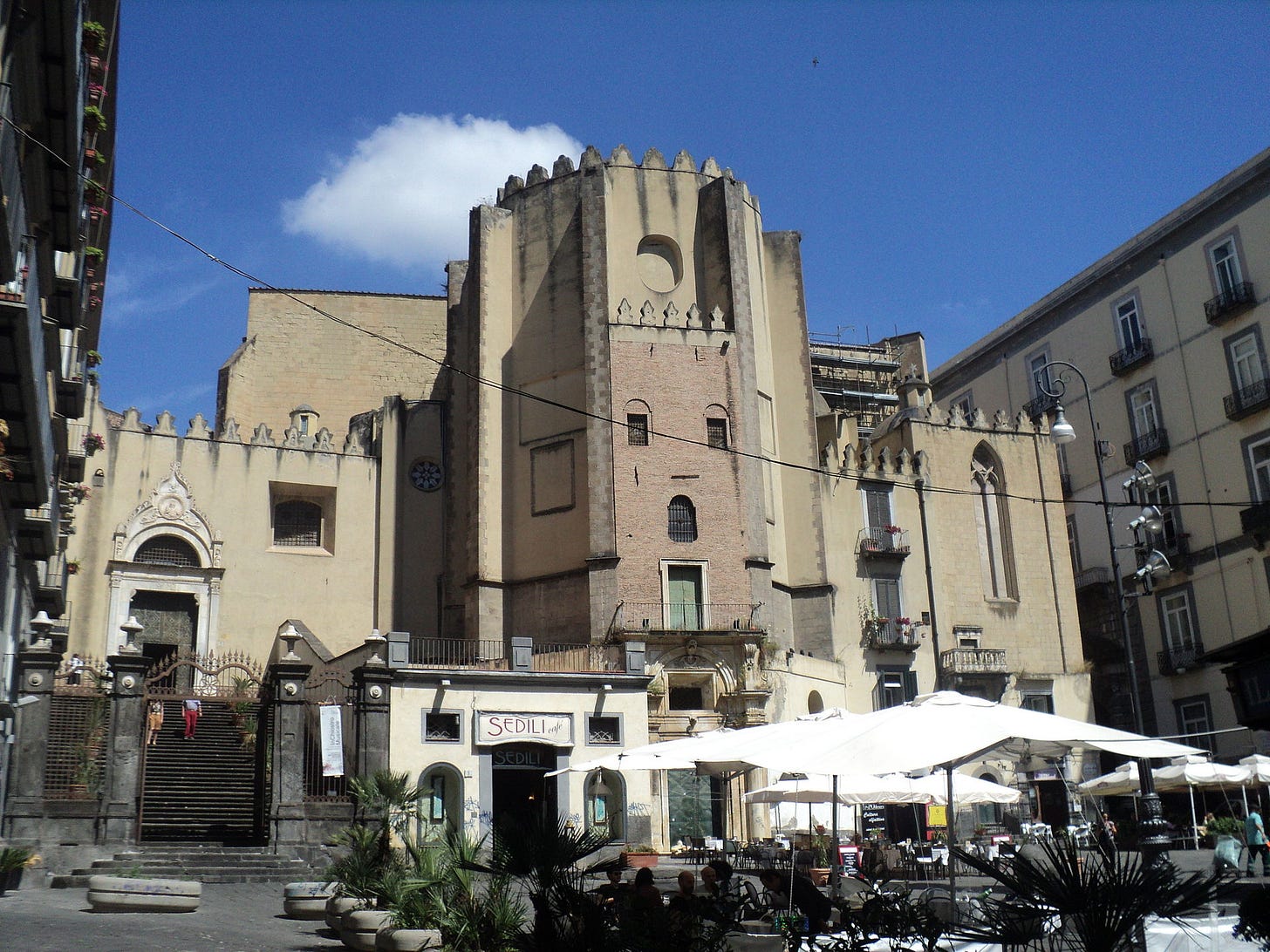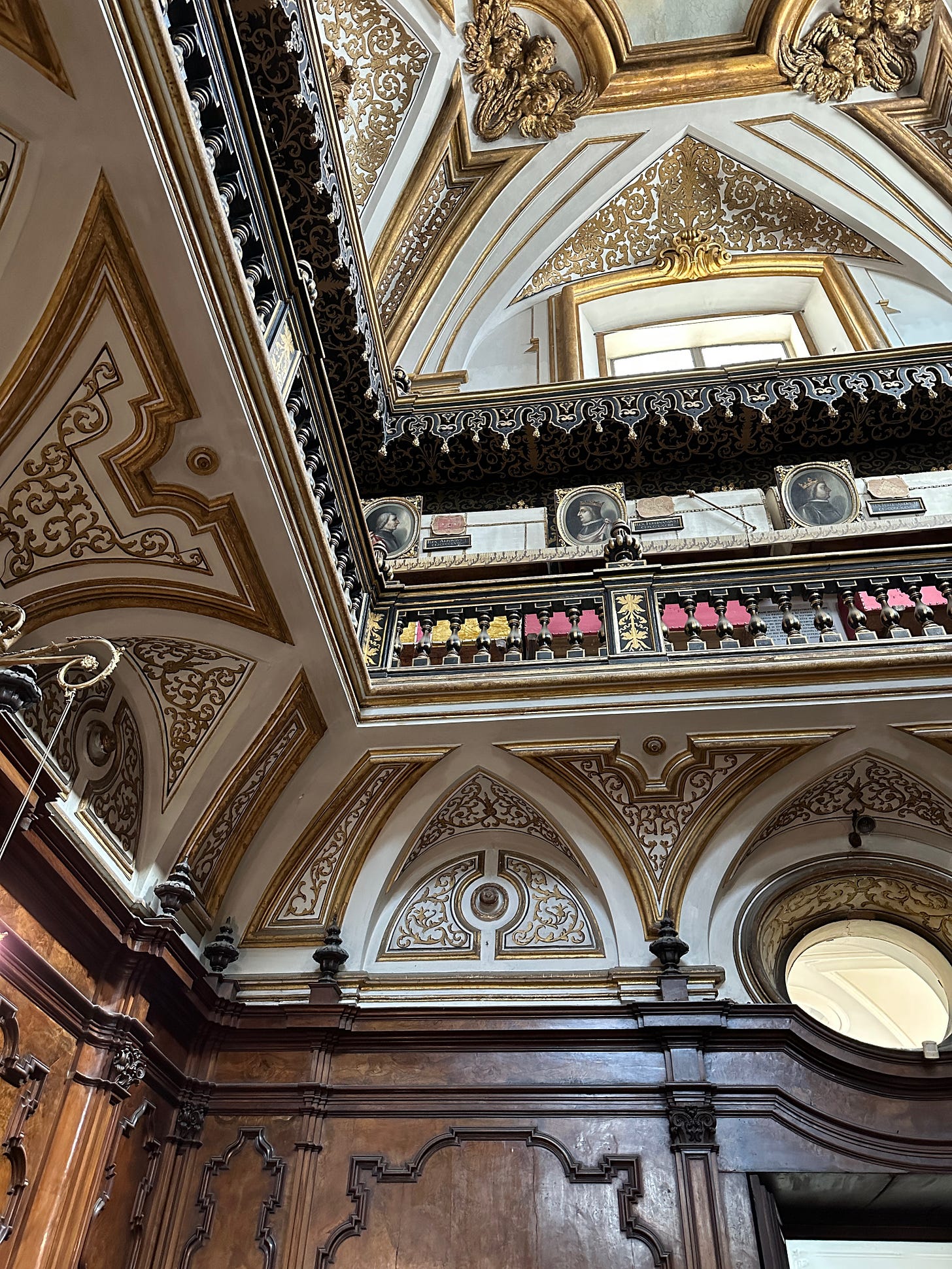Secrets of the Dead
The Renaissance mummies that make history come alive
I have a lot of friends who have been dead for at least 500 years. These are folks from history I have studied and whose stories I share. The job of a historian is to take temporary custody of a story, examine it closely, and hopefully add some new insight for the next generation so the past may endure a little longer. I used to do that careful, patient work, but now I’m more of an evangelist. I use the work of scholars to introduce people to my friends from history and widen the circle.
In graduate school, I studied the Aragonese kings of Naples, specifically Alfonso V of Aragon, who sent his army through a sewer pipe to sneak up on the French and steal their castle and kingdom along with it. I also got to know his ferocious and illegitimate son Ferrante and his gouty grandson Alfonso. I spent years writing about their lives, so never thought much about their death until I met their mummies in the church of San Domenico Maggiore just a few weeks ago.
The church looks like a fairy tale. It’s partially pink with stone gingerbread, and there’s a pizzeria built into the lower level. On this visit, I decided to go inside and pay the 10€ for a ticket for a tour. There was only a Belgian couple1 and me. Though this was once one of the most important churches in Europe, few people visit.
First, we saw the sacristy where the Aragonese royalty is entombed in coffins along a balcony: 42 people in total. I learned that in the 1980s and 90s, paleo-pathologists at the University of Pisa studied 31 of their bodies. Before entombment, their bodies’ fluids had been drained in sand below the church, and the warm, dry, Neapolitan air had naturally mummified them: a golden opportunity to learn about the health of the most elite citizens during the Italian Renaissance.
The bodies were carefully unwrapped, and their garments were turned over to costume historians who cleaned, studied, and prepared them for display. Now the clothes are installed in giant wardrobes behind the basilica, where we were invited to literally go through their drawers.
I wish I had taken better pictures, but I felt shaken by the intimacy of the experience. I pulled open the heavy wooden drawers one by one to see these nearly 500-year-old delicate things. There was a wooden crown gilded in gold, a damask dress with elaborate hand-cut patterns of grapevines, and shoes and hats that belonged to children who were victims of Bubonic plague. Stories were transformed into human beings who once walked the streets of Naples.

The paleo-pathologists found atherosclerosis, hepatitis, gallstones, pubic lice, obesity, smallpox, and a mortal stab wound. Inside King Ferrante, they found a colorectal tumor likely caused by overeating red meat. Inside Maria d’Aragona, a poet who grew up in the castle of Ischia with the renowned Renaissance poet Vittoria Colonna, scientists found multiple tumors caused by HPV, the first instance of this virus in a mummified body and a groundbreaking discovery for oncologists. On the teeth of Isabella d’Aragona, they found a black patina from chronic mercury intoxication — then treatment for syphilis.
After our time with royals, the guide offered to take us to the monk’s cells where Saint Thomas Aquinas had lived in 1272. His holiness was so great during this period that there are reports of him levitating in prayer.

She asked us to be silent as we passed through the long corridor of cells because a few elderly friars still resided there. I thought of the spiritual energy this place would have once had, its importance, and how it might soon be turned into a five-star hotel like so many convents and monasteries in Italy. A more pleasant reminder of the human condition interrupted my melancholy — the aroma of hot cheese.
“Pasta al Forno,” the guide said, sniffing the air and smiling. “They are making lunch.”
You will encounter a Belgian couple in every abandoned church, feral castle, and empty archaeological site in Italy. They are good travelers.






I've visited San Domenico several times, but only saw the sacristy and its displays for the first time last year. Look forward to re-visiting.